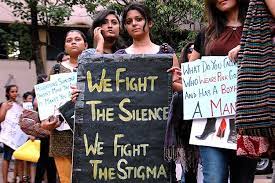The task at hand is twofold: first, to present a schematic account of feminism in India; second, to raise some theoretical and methodological concerns associated with representing it. This decision to question the process of narrating was motivated by the fact that writing in the second decade of the twenty-first century requires us to consider some of the developments in the preceding decades that have a profound impact on both the practise and theory of feminism. In other words, I want to highlight some of the changing features of the contemporary context in which I write about feminism for Western academia as a resident Indian scholar.

[i] Over the last forty years, a rich and complex body of feminist writings has emerged, which has become institutionalised in many ways within academia.
(ii) Since the 1980s, the rise of multiculturalism and postmodernism in the West has resulted in not only recognition but also celebration of diversity and plurality, including divergent feminisms.
(iii) the rise of postcolonial studies, articulated in the writings of non-Western scholars based in the West on the one hand, and a preference for poststructuralist theory on the other; and
(iv) finally, the increased visibility of India and Indian scholarship in recent decades of globalisation. My central argument is that these developments are not incidental but integral to Indian feminism.

What is Feminism?
belief in and advocacy of the political, economic, and social equality of the sexes expressed especially through organized activity on behalf of women’s rights and interests.

Throughout most of Western history, women were confined to the home, while men dominated public life. Women were denied the right to own property, study, or participate in public life in mediaeval Europe. At the end of the nineteenth century, women in France were still required to cover their heads in public, and a husband could still sell his wife in parts of Germany. Even as late as the early twentieth century, women in Europe and most of the United States (where several territories and states granted women’s suffrage long before the federal government) could not vote or hold elective office.Women were barred from conducting business without the presence of a male representative, whether it was a father, brother, husband, legal agent, or even a son. Without the permission of their husbands, married women could not exercise control over their own children. Furthermore, women were denied access to education and were barred from most professions. Such restrictions on women still exist in some parts of the world today.
History of Feminism

India is vast, diverse, and inequitable. The stories of feminism are also diverse. What unites them is a colonial past, despite the fact that the spread and impact of colonialism was uneven and uneven. Following that, nearly 65 years of development under a reasonably proactive Indian state, despite the fact that the class, caste, region, and gender implications of its policies were not uniform. As a result, it is not surprising that Indian feminist writings have been intersectional since their inception. My goal here is to highlight key moments in the emergence and growth of the Indian women’s movement.It is dangerous to try to fit so much history into so little space. Readers will forgive me for this, and my references to numerous scholarly works on feminism and women’s studies (see John, 2008 ; Omvedt, 1993 ; Sangari, Vaid, 1990…) are my way of indicating sources for additional information to the readers.

- The women’s question was sharply articulated in 19th century social reform movements, paving the way for the growth of women’s writing and voices during the same period;
- The emergence of women’s groups in the early twentieth century, as well as women’s political participation;
- Women’s independence and state domestication of the issue;
- Feminism in the 1970s and 1980s: revival and new challenges;
- Feminism’s paradigm shift since the 1990s
Feminism in 21st century

Women in India, where patriarchy reigns supreme, have seized any opportunities that have come their way: from being highly educated to breaking the glass ceiling at work, new-age Indian women understand what is at stake. In a country where feticide, rape, and domestic violence are common, While violence and body shaming are common, women want more than symbolic love. Feminism’s significance: Women have realized the importance of advancing their status. Domestic creatures to newer roles in business, technology, research, the arts, and other fields. They are now standing shoulder to shoulder with men as a result of this process. This transformation has occurred. globalization has brought about: Gone are the days when women relied on men for information. Whatever else is going on outside the four walls of domesticity, information technology has caused a massive paradigm shift in how women live and are perceived by society. The general public’s awareness of issues has played a critical role in bringing women to the forefront: Women nowadays have access to social media and know how to express themselves.





